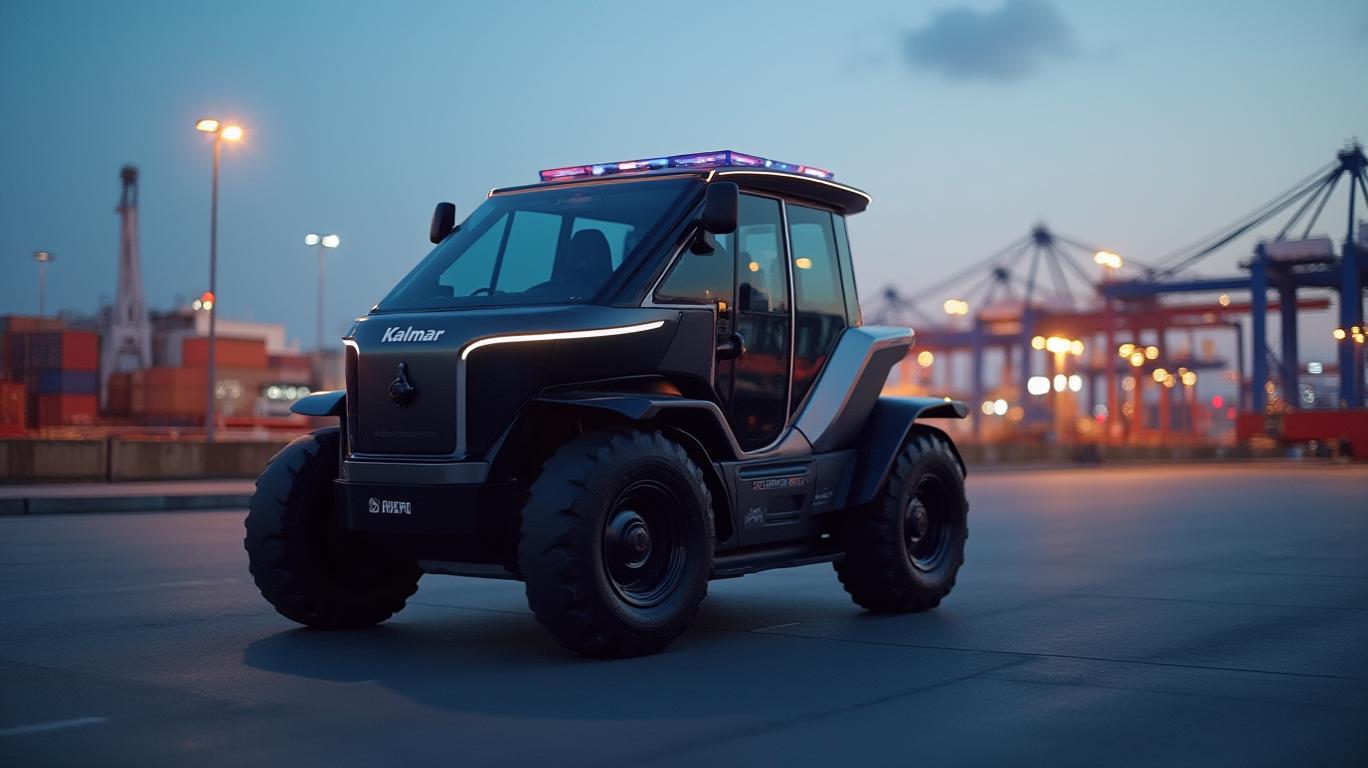Kalmar’s Autonomous Shift: How the Ottawa AutoTT™ Could Redefine Logistics Efficiency
The logistics industry is on the cusp of a transformation, and Kalmar AB (HE:KALMRV) is betting big on autonomy to lead the charge. The Finnish industrial giant’s April 2025 announcement of the Ottawa AutoTT™, its new autonomous terminal tractor, marks a bold step into a market ripe for disruption. Designed to operate in distribution centers, container terminals, and industrial yards, this vehicle combines cutting-edge automation with Kalmar’s decades of terminal tractor expertise. But can this innovation drive sustainable growth for investors? Let’s dig into the details.
The Ottawa AutoTT™: A Marriage of Hardware and Software
The AutoTT™ is no ordinary terminal tractor. It integrates Kalmar’s factory-built drive-by-wire system—designed for seamless automation—with Forterra’s AutoDrive® platform, a military-grade autonomous driving solution. This partnership, forged in March 2024, merges Kalmar’s manufacturing prowess with Forterra’s advanced AI and sensor technology. The result? A vehicle capable of navigating complex environments in all weather conditions, operating safely alongside humans and other vehicles.

The AutoTT™ will first launch as a retrofit for Kalmar’s diesel-powered Ottawa T2 terminal tractor, with an electric variant—T2 EV AutoTT™—expected by 2026. Key features include:
- All-weather reliability: Operates safely in extreme temperatures (-22°F to 122°F).
- Scalability: Customers can adopt fully autonomous fleets or retrofit existing tractors.
- Centralized management: Integration with Kalmar’s Kalmar One Fleet Management System for real-time oversight.
The electric model, in particular, aligns with global decarbonization trends, offering zero-emission operations—a critical selling point as regulations tighten.
Market Positioning: A Play for Efficiency and Sustainability
Kalmar’s move targets a growing pain point in logistics: labor shortages and rising operational costs. Autonomous tractors can reduce dependency on drivers while improving productivity through 24/7 operation. The company also emphasizes safety, leveraging Forterra’s redundant systems to minimize human error.
But how does this stack up against competitors? Rival firms like Terberg and Konecranes are also pushing automation, but Kalmar’s deep ties to terminal tractors—over 85,000 units produced since 1943—give it a manufacturing edge. The retrofit option further broadens its appeal, allowing gradual adoption for customers wary of full-scale overhauls.
Financial Implications: Margins Under the Microscope
Investors, however, must look beyond the product itself to Kalmar’s financial health. The company’s Q1 2025 results, released April 29, will be pivotal. Analysts project revenue of €422.4 million and an EBIT of €50.8 million, translating to an operating margin of ~12%—the minimum threshold Kalmar needs to meet its 2025 target.
A margin below 12% could jeopardize its long-term goal of 15% by 2028, while exceeding it would bolster confidence. The service business—up 15% YoY in Q4 2024—offers a stabilizing force, but North American market softness remains a drag. Kalmar’s €955 million order book (down 7% YoY) underscores lingering customer caution, particularly in distribution and dealer inventory segments.
Risks and Rewards: Navigating the Road Ahead
The AutoTT™ is not without challenges. Full-scale production isn’t expected until late 2026, and adoption could be slow in sectors resistant to automation. Geopolitical risks and currency fluctuations (e.g., a weakening euro) also loom. Yet, the strategic partnership with Forterra and Kalmar’s €50 million cost-saving “Driving Excellence” program (targeting 2026 efficiency gains) provide a foundation for resilience.
Investors should also note the 3-year/6,500-hour warranty on electric components and the 6-year battery warranty, which reduce long-term maintenance costs—a key selling point for customers.
Conclusion: Autonomous Ambition Meets Financial Realities
The Ottawa AutoTT™ is a compelling step toward Kalmar’s vision of “sustainable material handling”, but its success hinges on execution. If Q1 results meet the 12% margin threshold, it could validate the company’s automation strategy and justify its ~15x forward P/E valuation. However, a margin slip or further order book declines could reignite volatility in a sector already strained by macroeconomic headwinds.
For now, the service business’s growth and the AutoTT™’s potential to address labor and sustainability challenges position Kalmar as a defensive industrial play with long-term growth catalysts. Investors should monitor Q1 margin details, North American market recovery, and the pace of autonomous pilot programs. With 85% of Fortune 500 companies prioritizing automation investments by 2026 (McKinsey, 2024), Kalmar’s bet on autonomy is timely—if it can deliver.
In the race to automate logistics, Kalmar’s Ottawa AutoTT™ is more than a product—it’s a test of the company’s ability to innovate, execute, and adapt in a fast-changing world. The results, both financial and operational, will soon be in.









